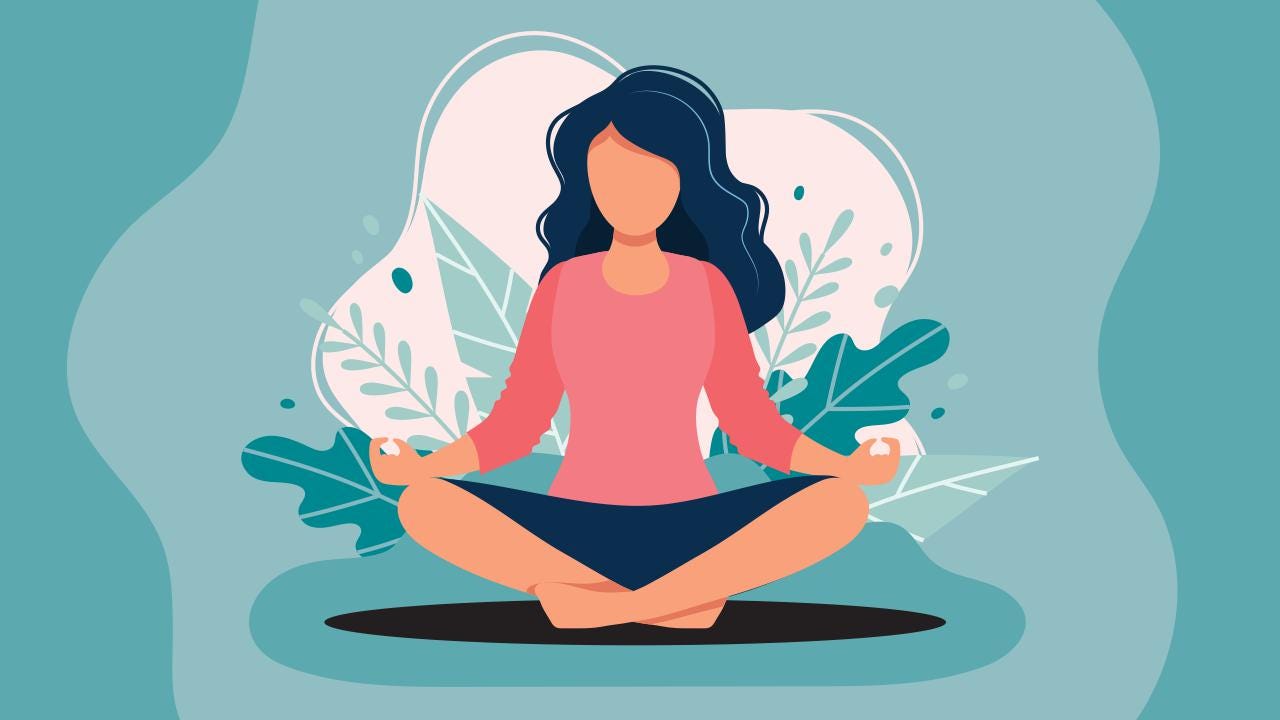The practice of mindfulness Meditation is a kind of mental training that may assist you in slowing down your racing thoughts, letting go of negative ideas, and relaxing both your mind and your body. A combination of meditation and mindfulness, which involves concentrating on "the now" and embracing one's thoughts, feelings, and sensations without passing judgment on them, is represented by this practice.
Meditation on mindfulness often involves taking slow, deep breaths and bringing awareness to both the body and the mind; however, the methods used might vary. You do not need any props or preparation in order to practice mindfulness meditation. To get started, all you need is a place to sit that is comfortable, three to five minutes of free time, and an attitude that is devoid of judgment.
How to Practice Mindfulness Meditation

Learning mindfulness meditation is straightforward enough to practice on your own, but a teacher or program can also help you get started, particularly if you're practicing meditation for specific health reasons. Here are some simple steps to help you get started on your own.
Get Comfortable
Look for a cozy, peaceful area. Maintain a straight but not rigid head, neck, and back when sitting in a chair or on the floor. Wearing loose-fitting, comfortable clothes also helps to prevent distractions.
However, there is no dress requirement necessary since this exercise may be done anywhere and for any length of time.
Consider a Timer
While not required, a timer (ideally with a mild, soothing alarm) may help you concentrate on meditation and forget about time, eliminating any excuses for stopping and doing anything else.
Because many individuals lose track of time when meditating, this might help you avoid meditating for too long. Allow yourself time after meditation to become aware of your surroundings and gradually rise up.
While some individuals meditate for longer periods of time, just a few minutes every day may help. Start with a 5-minute meditation session and gradually expand the duration to 30 minutes.
Focus on Breathing
Become aware of your breath, attuning to the sensation of air moving in and out of your body as you breathe. Feel your belly rise and fall as the air enters your nostrils and leaves your nostrils. Pay attention to the temperature change when the breath is inhaled versus when it's exhaled.
Notice Your Thoughts
The idea is to become more comfortable being a "witness" to your thoughts, rather than stopping them completely. When thoughts arise in your mind, do not dismiss or repress them. Simply take notes, be cool, and utilize your breathing as an anchor. Consider your thoughts to be clouds that pass by; observe how they fluctuate and change.Repeat this as needed while meditating.
Give Yourself a Break
If you find yourself getting carried away in your thoughts—whether with worry, fear, anxiety, or hope—observe where your mind went, without judgment, and just return to your breathing. Don't be hard on yourself if this happens; the practice of returning to your breath and refocusing on the present is the practice of mindfulness.
Impact of Mindfulness Meditation
Regular practice of mindfulness meditation has benefits for your physical as well as your mental health. Some of these include:
- Reducing stress: Mindfulness-based stress reduction (MBSR), a standardized therapeutic approach to mindfulness meditation, has been shown to reduce symptoms of stress in healthy individuals.1 The practice has also been found to be beneficial for a number of mental and physical disorders including anxiety, depression, and chronic pain.
- Lower heart rate: Heart disease is one of the top causes of death in the United States and research suggests that mindfulness may be beneficial for your heart. In one study, participants either enrolled in an online mindfulness meditation program or were added to a waitlist for traditional treatment for heart disease.2 Those who participated in mindfulness meditation had significantly lower heart rates and performed better on a test of cardiovascular capacity.
- Improved immunity: Research also suggests that mindfulness practices may improve your body's resistance to illness. One study compared the impact of both mindfulness and exercise on immune function.3 They found that people who had taken part in an eight-week mindfulness course had greater gains in immune function than those in the exercise group.
- Better sleep: Studies have also shown that practicing mindfulness meditation might improve sleep and even be useful for treating certain sleep disturbances. One 2019 study found that mindfulness meditation significantly improved sleep quality
Tips to Practice Mindfulness in Daily Life
As you practice mindfulness meditation, it helps to find ways to bring mindfulness into your everyday life—especially on those days when life is too busy to carve out a minute alone. Mindfulness meditation is one technique, but everyday activities and tasks provide plenty of opportunities for mindfulness practice.
- Brushing your teeth: Feel your feet on the floor, the brush in your hand, and your arm moving up and down.
- Doing dishes: Savor the feeling of the warm water on your hands, the look of the bubbles, and the sounds of the pans clunking on the bottom of the sink.
- Doing laundry: Pay attention to the smell of the clean clothes and the feel of the fabric. Add a focus element and count your breaths as you fold laundry.
- Driving: Turn off the radio—or put on something soothing, like classical music. Imagine your spine growing tall, find the half-way point between relaxing your hands and gripping the wheel too tightly. Whenever you notice your mind wandering, bring your attention back to where you and your car are in space.